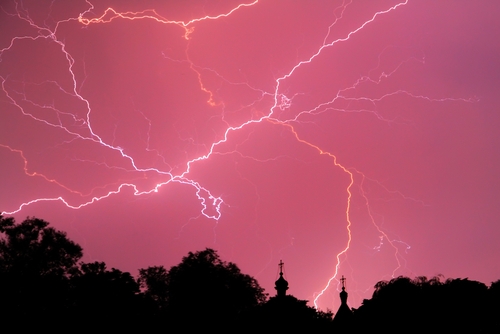
The report mentions by name the Cozen O’Connor CSST Task Force and highlights a number of cases handled by our attorneys. Several months ago, Angela Hahn, co-chair of the CSST Task Force, had a chance to share information with one of the Panel members of the Foundation, engineer Mitchell Guthrie, at the Lightning Protection System’s Annual conference . She was joined by Mark Utke, who later met again with Mr. Guthrie to discuss at length the case of Tincher v. Omega Flex, Inc., a CSST failure case that Mark tried to verdict this past January.
As background, CSST stands for corrugated stainless steel tubing. It consists of a continuous, flexible stainless steel pipe corrugated in helical fashion to make it flexible. The exterior of CSST is typically coated with PVC or polyethylene (PE) that is yellow in color. The tubing walls of CSST are flexible and only approximately 10 mils thick (the equivalent of four sheets of paper), making CSST extremely vulnerable to damage in the event that energy from lightning should strike at or near a structure. The energy from a direct or indirect lightning strike will seek conductive materials to travel along and move toward ground. While seeking to go to ground and traveling the course of the CSST material, the energy can and does on occasion transfer or “jump” from the tubing. The transfer can occur when there is another metallic circuit, such as a chimney line, near the CSST, resulting in electrical arcing. The effect of an electrical arc is to create a hot plasma discharge and leave a hole. The combination of the high heat from the arcing event and the flow of gas through the resulting hole – both occurring at the same location — will ignite the pressurized gas and causes a blow-torch effect, which can result in a significant fire.
The April 2011 CSST Report provides numerous examples of CSST failure scenarios and attempts to offer solutions, which it also calls “mitigations,” to address future CSST failure scenario. The Report cautions that merely bonding the CSST at its starting and/or ending point may not be sufficient and that “a global equipotential solution is necessary to achieve a complete solution.” The “mitigations” would include the following possibilities if supported by testing: multiple bonding, bonding with a short length of conductor, requiring minimum bends, requiring a separation distance from another metallic circuit (such as a chimney flue or cable), and a design change that would enhance the ability to withstand a lightning surge. The report notes that some manufacturers already include some of these requirements in their latest “installation rules.” But the report cautions: “However, based on some studied CSST cases, holes do not always occur where the distance between the CSST and a metallic part is the smallest, and thus separation distance may be difficult to address.” It also cautions that none of these potential solutions may actually work: testing is still needed to show that they will, in fact, work.
The recommended testing is summarized in the Conclusion section, as follows:
The scenario analysis, when compared to tests published so far (or simulations, should it be difficult to carry out some tests due to laboratory limitations when long lengths of CSST are required) have shown that some tests are missing. For the sake of clarity, we repeat below the main statements given in the scenario clause:
• Simulations are needed to show if separation distance is needed based on bonding conductor length and possible lightning currents given from the standard database. Bonding conductors located at the entrance may not be enough if the bonding conductors are too long. In that case, multiple bonding or separation distance may solve the problem (please note that a few cases have shown that incidents occurred in spite of apparent sufficient separation distance).
• Tests should be made to check the ability of CSST to withstand small fault current for a long time, as well as higher fault current for a shorter time.
It should be confirmed that multiple bonding is unlikely to create a major problem when surge current is flowing along CSST.
• Tests should be performed to identify the impedance (mainly inductance) of CSST per unit measure.
• Tests to determine CSST impedance should incorporate the maximum bending radius as given in technical brochures. The effect of bends should be investigated.
• Tests should be performed with 8/20 impulses (representing induced surges) to see if this can damage CSST if multiple bonding is not provided.
Based on tests results, it will be possible to determine if multiple bonding is necessary of not. The needed tests and simulations are described below. With four types of test, all scenarios can be covered.
Whether CSST manufacturers will follow the report’s recommendations and conduct the testing remains to be seen. For additional information regarding CSST failures, please contact the author of this blog post.



